Dr. Mauricio de Maio’s MD Codes
MD Codes
The MD Codes™ system was developed to increase clinician success rates by reducing variability in the technical aspects of hyaluronic acid (HA) filler treatment and focusing on addressing unfavorable emotional attributes of the face.
The MD Codes, or medical codes, represent specific anatomical subunits for injection of HA fillers. Each MD Code includes information regarding the target depth of injection, the proper delivery tool (needle or cannula) and delivery technique (e.g., aliquot, bolus, fanning), and the minimum product volume recommended to achieve visible, reproducible results (active number). During treatment planning, the appropriate MD Codes are selected using algorithms focused on lessening unfavorable facial attributes (a saggy, tired, sad, or angry look) and enhancing positive attributes (an attractive, younger, more contoured, or feminine [soft] or masculine look).
MD Codes provide a universal symbolic language for reducing variability in injection technique. The platform provides user-friendly algorithms to help clinicians increase patient satisfaction by going beyond treatment of lines and folds and to focus on reducing unfavorable facial attributes.
Cheeks
Treatment of the cheek area should always begin by addressing the lateral lifting vectors, represented by Ck1 and Ck4. The contour step is divided into the upper face (treating the temples) and the lower face (chin and jawline). The final step is refinement, which involves treating tear troughs and lateral canthal lines (or crow’s feet lines) in the periorbital area, and deep nasolabial folds, the lips, and marionette lines in the perioral area. Thus, treating a tired look should be addressed by first providing foundation to the midface (e.g., saggy cheeks: Ck1 + Ck2 + Ck3 + Ck4.Thus, according to the saggy cheeks algorithm, she would benefit from treatment of only Ck1. The mother may present with sagginess and volume loss concentrated only in the medial aspect. She may benefit from treatment of Ck1, Ck3, and Ck4. The grandmother, due to a greater severity of volume loss and sagginess, may be eligible for treatment of all five cheek anatomical areas (Ck1 + Ck2 + Ck3 + Ck4 + Ck5).
Tear Trough
The algorithms for treatment of the tear troughs and the eye bags are shown in Fig. 2c and d, respectively. The vast majority of people presenting with distracting tear troughs and eye bags also have saggy cheeks and/or volume loss that would first require treatment of the cheeks (foundation) and the temples (contouring). Only a young patient who presents with no volume loss or sagginess may benefit from direct treatment of the tear troughs (Tt1 + Tt2 + Tt3), but this rarely occurs in clinical practice.”
MD Codes™: A Methodological Approach to Facial Aesthetic Treatment with Injectable Hyaluronic Acid Fillers
Under-Eye/Tear Trough
Dr. Nussbaum: “Tear troughs need a filler that will not draw in a ton of water, while also avoiding the Tyndall effect (the bluish tint under the skin). “
Dr. Cabin: “The most important consideration with under-eye filler is that a filler takes in as little water as possible (or, in technical terms, is relatively ‘hydrophobic’). Otherwise, you’ll trade under-eye hollows with bags made mostly of water. Restylane is relatively hydrophobic, and tends to look the most natural under the eyes.”
Product for under eye Redensity 2
Chin and Jaw
Corrections with HA implant will try to give more importance to the middle and lower third of the face, treating cheek areas with Ck3, Ck4 and Ck5, as well as jaw (Jw) areas Jw1, Jw2 and Jw3.
Note that C1, C2, C5, and C6 were injected, as well as Jw4 and Jw5, to improve chin shape and address the double chin.


